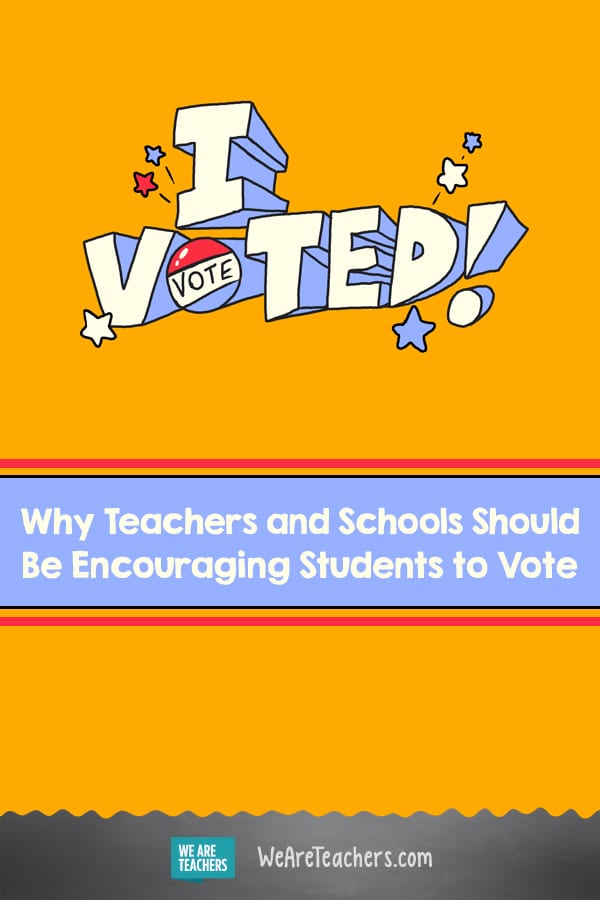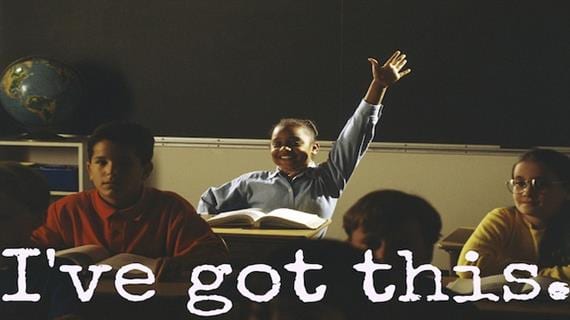As the midterm elections approach, I believe teachers have a duty to fulfill. It is our responsibility to encourage students to vote.
We should encourage every student of voting age to go to their respective polling place on Election Day and do their civic duty. Even students who aren’t yet old enough to vote should see their teachers talk about and promote voting.
I’m not suggesting we steer students toward a certain candidate or belief. In fact, we shouldn’t care which way our students vote—only that they do. But it should definitely be part of the conversation in classrooms and schools.
Be political but don’t get political.

We should never push our own beliefs onto students. In fact, pushing our own political agendas is not OK. Yes, getting students to vote is absolutely part of our job as educators. However, getting kids to vote the way we would vote is absolutely not. That kind of political proselytizing is a violation of our profession and the democratic ideals we should be promoting.
Try to show different points of view.

Our students are smart, and even when we try to remove our political leanings from our lesson planning, our kids likely know where we stand. In fact, letting them see a bit of our own personal convictions can be hugely advantageous. Let’s look at an issue like immigration.
A teacher might present a certain stance on this issue. Students might even be able to tell how the teacher feels about it. But teachers should also provide reading material from different points of view. This is part of our job as educators. We have to present, equally, all sides of the argument. Then we should encourage students to form their own opinions.
[contextly_auto_sidebar]
Don’t let hate be presented as a political position.

Politics can be messy, especially today. As much as we want to respect different perspectives, that does not mean we should to shy away from calling out bigotry, xenophobia, sexism, homophobia, etc. when they are presented under the guise of being a legitimate political view. Expressing the belief that white people are superior to other people, for example, is hate speech that should be called out as such.
Similarly, stereotypes about certain groups of immigrants should not to be shared in a classroom, unless the goal is to unpack and dispel them. It is part of our job to help students see the difference between voicing a less popular opinion and engaging in bigotry and hate speech. When the latter happens, we should challenge it.
Be the change.

Students look at us as role models, and we have the chance to help shape public discourse by being good examples. We have the opportunity to model civility. Perhaps the best way to do that is to express and challenge our own ideas. This is, again, why I believe we don’t need to completely hide our views from our students. If they never know what we believe, they can never witness us changing our minds in the face of new information or more careful consideration. By consuming news from a variety of sources, by reading the thoughts of “the opposition,” we have the ability, through our actions, to show our students what democracy should look like.
So as election season rolls around, let’s advocate engagement, and let’s not shy away from the pressing social issues of our time. Instead, let’s openly discuss them with our students. Let’s express what we think, but more importantly, let’s be open to what others, especially our students, think.
We should share with our students that we think voting is important. We should also reiterate the importance of voting based on a clear understanding of the candidates and the issues. So talk with your students about the issues, have them deeply and critically read different perspectives, and encourage them to head to the polls.
What’s your take on whether teachers should encourage students to vote? Come and share in our WeAreTeachers Chat group on Facebook.
Plus, check out teachers running for election this year.


